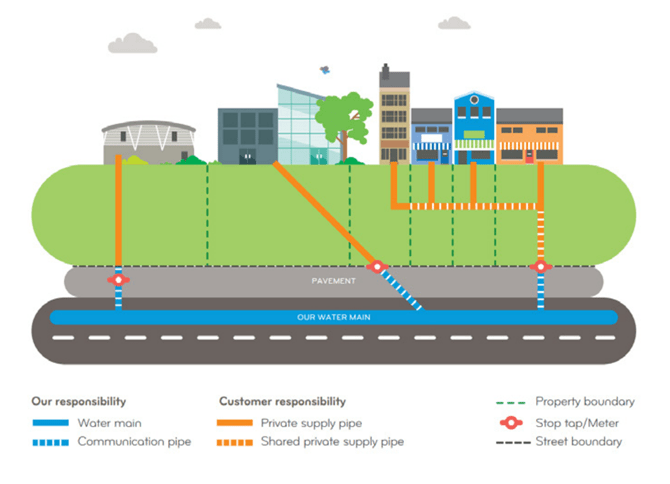Testing for water leaks at your business
All the information you need for finding and managing leaks and bursts on your business premises.
Why do leaks happen?
Sometimes leaks occur and this can be due to the age of the pipe, a weakness in the pipe, leaking fittings or joints and movement in the ground.
Signs you may have a water leak at your business
We want to do everything we can to encourage our customers to detect and repair leaks as quickly as possible. This helps us to reduce leakage and helps you to potentially save large amounts of money.
You may have a leak if you notice:
- Areas of lush vegetation
- A big drop in water pressure
- A hissing noise near your internal stop tap
- Damp patches on the ground
- An unexplained change on your bill.
Generally, leaks on business premises are either internal or underground. Internal leaks are found within the buildings themselves and are often easier to spot. Signs include dripping taps.
Underground leaks are harder to spot, and signs often include damp patches on the ground, pooling water and areas of lush vegetation.
How to test for a water leak
Follow the below 5 simple steps:
- Locate your water meter, which is usually within the footpath outside your premises. If it’s safe to do so, access the chamber and take a reading. If you’re having trouble finding it, your meter location & serial number are on your bill.
- Turn off all water-using devices in your premises. If the dials on the meter are still moving, you probably have a leak.
- Next, locate your internal stop tap, which is normally on your premises where the water enters your building. Close the stop tap by turning it clockwise. Read the meter again, and if the dials are still moving, you may have a leak on the pipe that goes from the meter to the stop tap.
- If the dials aren’t moving, your leak may be on your internal pipework or fittings. If it’s an internal leak, you could undertake a visual check of common leaking areas such as taps, toilets and tank overflows. However the leak may be on pipework hidden within the structure of the premises.
- If it’s an external leak, you could undertake a visual inspection of the ground within your boundary for unexpected wet or damaged areas.
Frequently Asked Questions
We own the pipes that run up to the street boundary and are responsible for repairing them.
Between the street boundary and your internal stop tap is your private supply pipe. This, alongside all internal pipework and fittings inside the premises are the owner’s responsibility to repair.
You can see a diagram below explaining what you are responsible for:
If you notice a leak on the street or outside your premises boundary, please contact us on 0800 052 0130 (24 hours a day, 7 days a week).
If you’ve found a leak within your premises boundary, it’s your responsibility to fix it. If you contact us, we will see if we can help you to locate the leak. If the leak is causing damage to your premises, please try to isolate the supply before contacting us.
If you need help to repair a leak, you can contact a WaterSafe plumber.
If the leak is your responsibility, you are usually liable for all of the water charges that have been incurred as a result of the leak. However, we may reduce the sewerage charges where water lost due to leakage has not returned to the sewer.
If you’ve had a change in your bill and can’t find a leak, get in touch with us to see how we can support you on 0800 052 0145 or by filling in this form.



